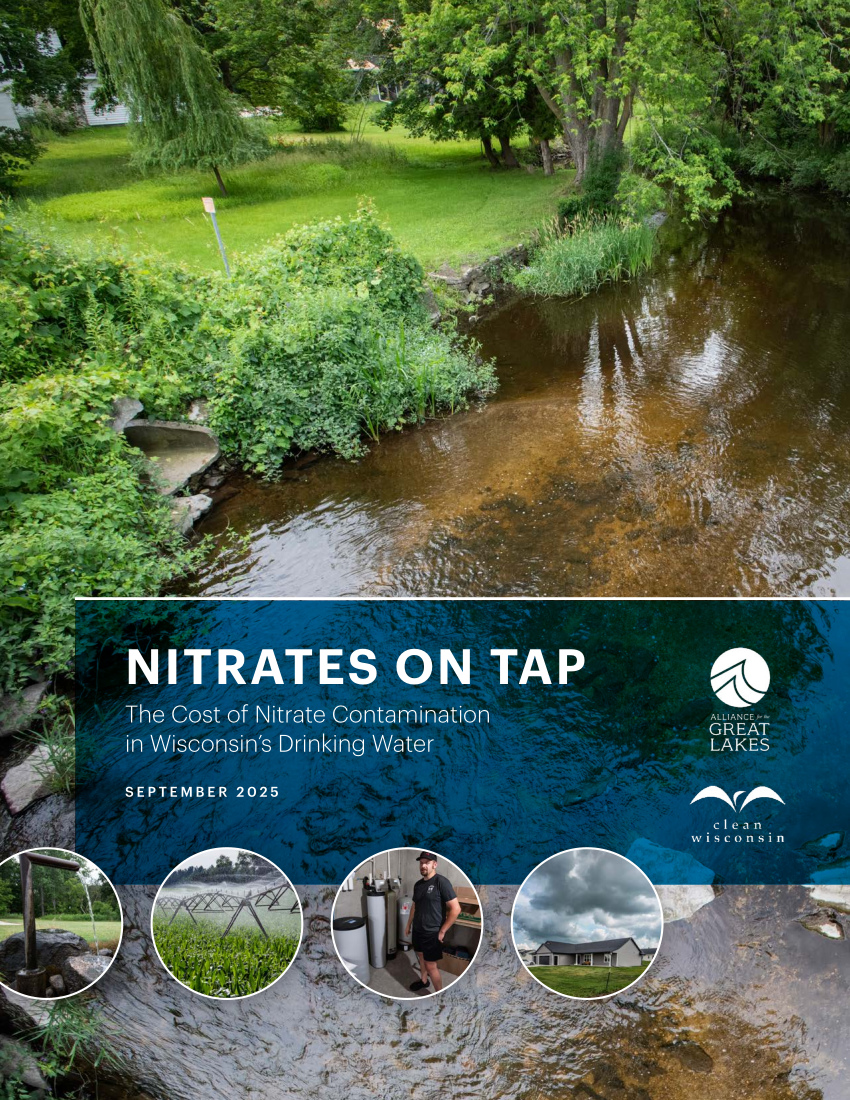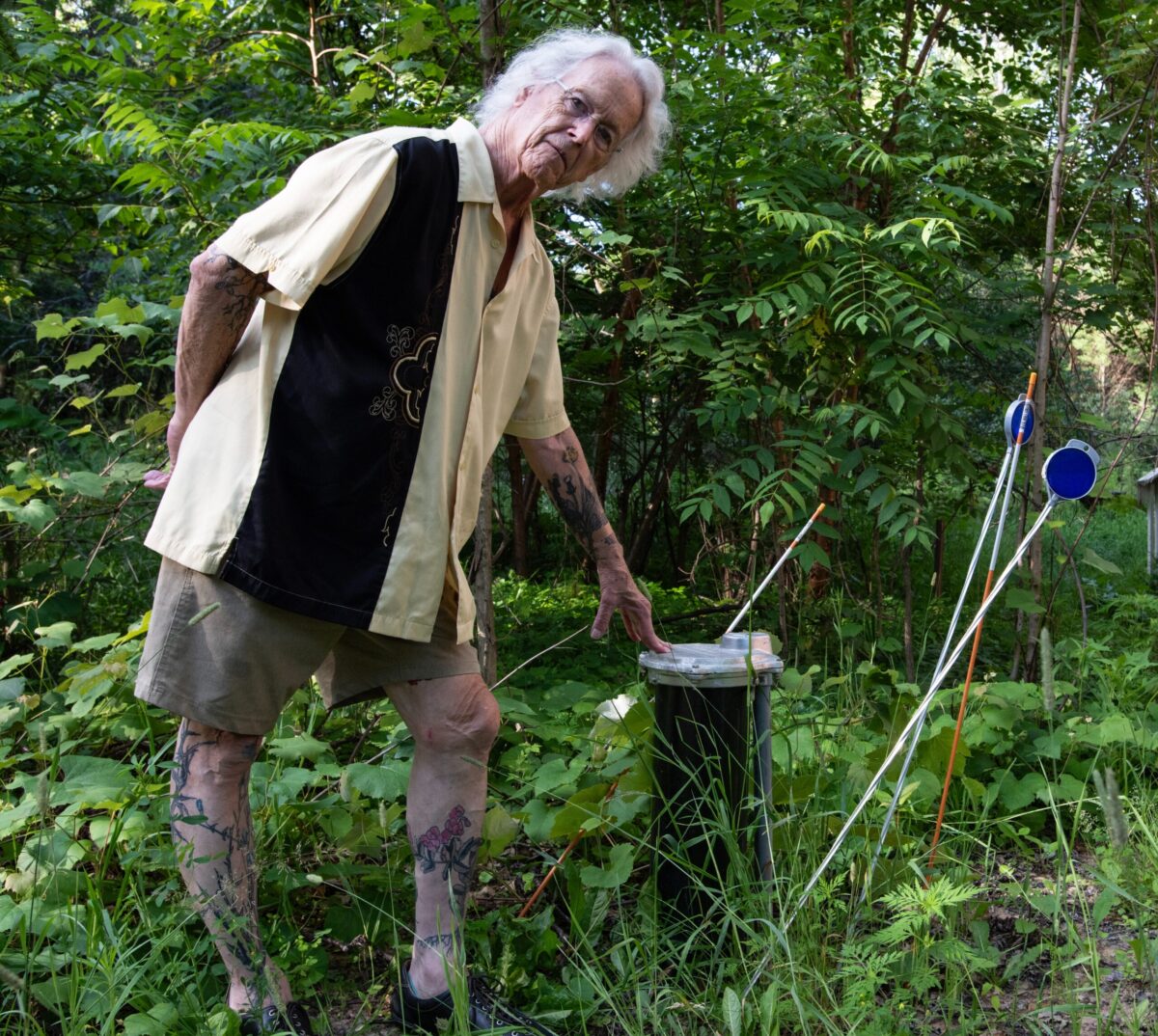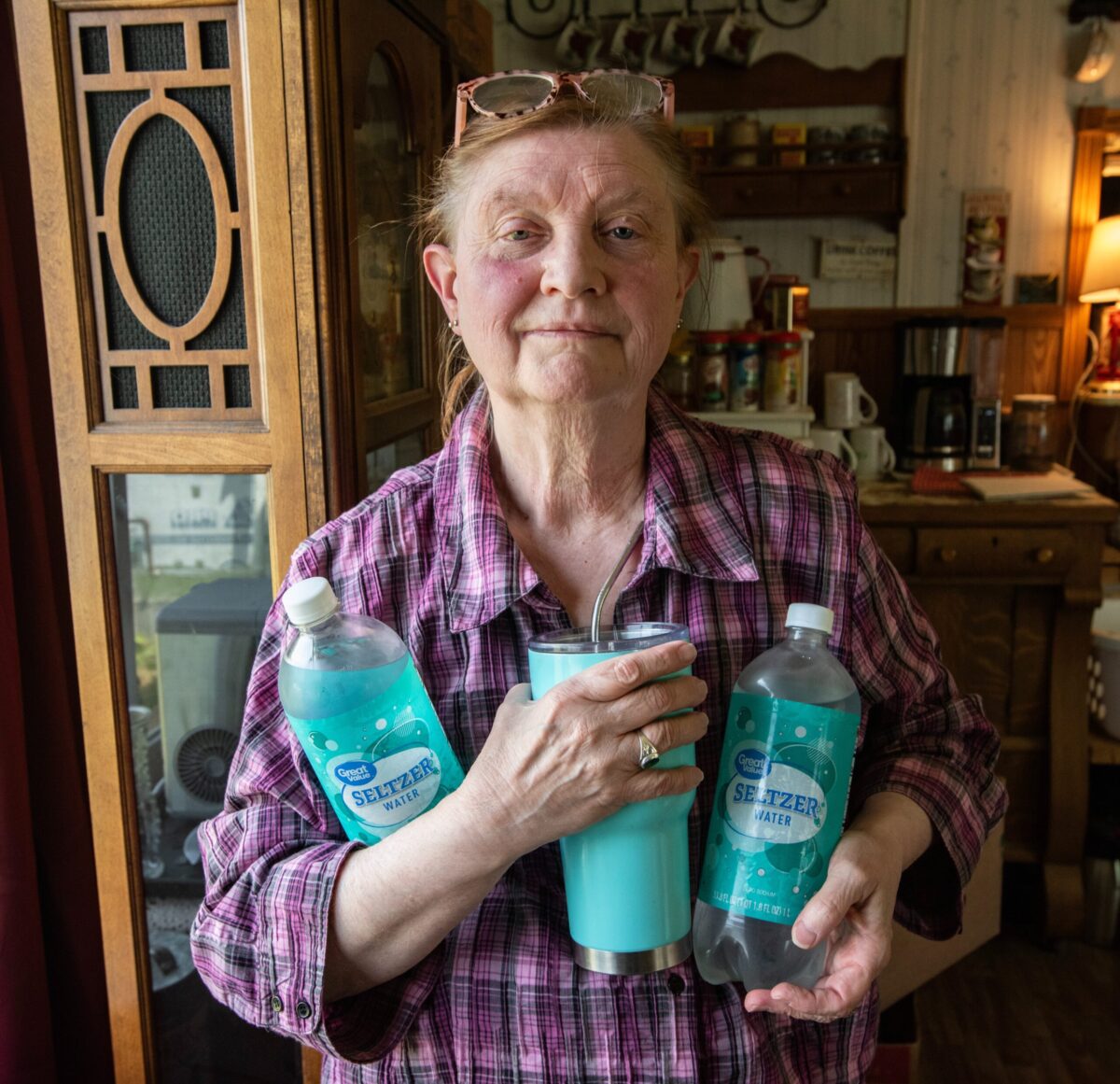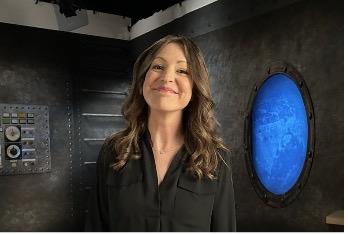Valuable Pacific Dataset Expanded
NCEI News Feed
https://www.ncei.noaa.gov/news/valuable-pacific-dataset-expanded
NCEI has published an updated version of the Northeast Pacific (NEP) Regional Ocean Climatology.
NCEI News Feed
https://www.ncei.noaa.gov/news/valuable-pacific-dataset-expanded
NCEI News Feed
https://www.ncei.noaa.gov/news/valuable-pacific-dataset-expanded
NCEI News Feed
https://www.ncei.noaa.gov/news/valuable-pacific-dataset-expanded
NCEI News Feed
https://www.ncei.noaa.gov/news/valuable-pacific-dataset-expanded
NCEI News Feed
https://www.ncei.noaa.gov/news/valuable-pacific-dataset-expanded
NCEI News Feed
https://www.ncei.noaa.gov/news/valuable-pacific-dataset-expanded
NCEI News Feed
https://www.ncei.noaa.gov/news/valuable-pacific-dataset-expanded
By Clara Lincolnhol
Meet former K-9 Maple. She made a big career switch earlier this year—from a human remains detection dog to a beekeeper at Michigan State University’s Pollinator Performance Center. The friendly brown-and-white dog, with a long tongue that hangs out of her mouth, dons her own beekeeping suit and uses her powerful nose to detect American foulbrood -- a bacteria that left undisturbed, means certain death for an entire honeybee colony.
The post Meet Maple: Former K-9 now beekeeper first appeared on Great Lakes Echo.Great Lakes Echo
https://greatlakesecho.org/2025/09/19/meet-maple-former-k-9-now-beekeeper/
176 Volunteers Unite To Protect Wisconsin's Waters Original Story: Water Action Volunteers, Emily Heald On August 9, 2025, people who love Wisconsin’s waters came together for the 12th annual Aquatic Invasive Species Snapshot Day—a statewide search for aquatic invasive species (AIS). From rivers and streams to lakes and wetlands, volunteers fanned out across 100 [...]
The post Waters Worth Protecting: Volunteers Unite for Snapshot Day 2025 appeared first on Fox-Wolf Watershed Alliance.
Fox-Wolf Watershed Alliance
https://fwwa.org/2025/09/18/waters-worth-protecting-volunteers-unite-for-snapshot-day-2025/?utm_source=rss&utm_medium=rss&utm_campaign=waters-worth-protecting-volunteers-unite-for-snapshot-day-2025

By Kari Lydersen
This story was originally published by Canary Media.
To all the challenges the solar industry is facing today, add one more: cultivating a domestic market for lamb meat. It may seem an unlikely mission for clean-energy developers, but in many states, including Illinois, grazing sheep between rows of photovoltaic panels is considered the most efficient form of agrivoltaics — the combination of solar and farming on the same land.
Great Lakes Now
https://www.greatlakesnow.org/2025/09/illinois-farmers-find-that-sheep-and-solar-arrays-go-well-together/
CHICAGO, IL (September 18, 2025) – Wisconsin faces a growing public health crisis from nitrate contamination in drinking water, according to a new report released today. Thousands of households are paying the price with higher water costs and serious health risks linked to nitrate contamination from fertilizer and manure pollution. Nitrate exposure is linked to serious health effects, including cancer, pregnancy complications, and infant methemoglobinemia, otherwise known as blue baby syndrome.
The report – Nitrates on Tap: The Cost of Nitrate Contamination in Wisconsin’s Drinking Water – was published to inform concerned Wisconsinites, serve as a blueprint for how other states can analyze and address the issue, and highlight the need for more protective nitrate standards. It was authored in partnership between the Alliance for the Great Lakes and Clean Wisconsin.

Nitrates on Tap also includes several powerful first-person testimonials from Wisconsin residents directly impacted by nitrates.
The report estimates that, statewide, 16 million pounds of fertilizer beyond what crops need to grow was likely applied to farm fields in 2022. Current state policies and voluntary programs have failed to curb this problem. Instead, those costs are being shifted to individuals and ratepayers while putting communities that depend on public and private drinking water systems at risk. For both municipalities and private well owners, nitrate contamination from agriculture drives up costs by increasing reliance on water treatment infrastructure, bottled water, and well replacement.

“Wisconsin communities are living with the health impacts and costs of nitrate contamination – costs that are largely borne by ratepayers and homeowners,” said Angela Blatt, Senior Agriculture Policy Manager for the Alliance for the Great Lakes and one of the report’s authors.
“We can’t just continue to dig our way out of the problem with groundwater wells. This report is a call to action for comprehensive changes in policy and practices that are necessary in Wisconsin – as well as other areas throughout the Great Lakes Basin – to protect our drinking water and stop the pollution at its source,” Blatt said.
“Nitrates are Wisconsin’s most widespread drinking water contaminant, with health risks even at low levels. The costs of treating our drinking water will only continue to rise, so we need to tackle this challenge at its source. Agriculture needs to have a seat at the table if we are going to identify and implement workable, effective and widespread solutions to protect families, safeguard water, and sustain our state’s farming future. This report is a call to start those conversations in earnest,” said Sara Walling, Clean Wisconsin Water & Agriculture Program Director.
The report lays out key facts about nitrate pollution and its impact on human health and the environment. Nitrates on Tap is also a sober assessment of the high costs of inaction and offers detailed recommendations for a coordinated, science-based policy response that state legislators and agencies can take, building upon previous efforts to combat nitrate pollution.

Recommendations include:
Without action, more Wisconsin families will face unsafe drinking water and mounting bills. This report shows how we can protect our water from nitrates, if policymakers act now.
Wisconsin had been taking steps to address nitrogen pollution, but the state legislature took away some rule-making authorities from regulating agencies. A recent Wisconsin Supreme Court decision, however, does open the door for stronger action and agencies should seize the opportunity.
###
Contacts:
Don Carr, Media Director, Alliance for the Great Lakes, dcarr@greatlakes.org
Amy Barrilleaux, Communications Director, Clean Wisconsin, abarrilleaux@cleanwisconsin.org
The post New Report: Nitrate Contamination Driving Health Crisis and Rising Costs in Wisconsin appeared first on Alliance for the Great Lakes.
News - Alliance for the Great Lakes
News - Alliance for the Great Lakes
https://greatlakes.org/2025/09/new-report-nitrate-contamination-driving-health-crisis-and-rising-costs-in-wisconsin/
The remains of a 19th century double-masted schooner rest under just seven feet of water in Lake Huron. The Maid of the Mist dragged its anchor and ran aground during a storm in 1878, causing its keel to break. The wreckage now lies buried deep in the sand. Read the full story by MLive.
Great Lakes Commission
https://www.glc.org/dailynews/20250917-1878-shipwreck
As whitefish disappear from the lower Great Lakes, scientists are hatching emergency rescue plans. One idea being floated is to take fish out of the lakes and raise them indefinitely in ponds for safekeeping. Read the full story by Bridge Michigan.
Great Lakes Commission
https://www.glc.org/dailynews/20250917-whitefish-rearing
An Areas of Concern Cross-Agency Partnership Summit in Toledo, Ohio, is bringing together federal, state and local partners to restore Areas of Concern in the Great Lakes region. Read the full story by WTVG – Toledo, OH.
Great Lakes Commission
https://www.glc.org/dailynews/20250917-aoc-summit
A nearly two-year long completed river restoration project aims to significantly improve water quality and aquatic habitats in the Maumee River as well as improve the health of Lake Erie. Read the full story by WTVG – Toledo, OH.
Great Lakes Commission
https://www.glc.org/dailynews/20250917-maumee-restoration
The Campbell’s Co. admitted on Monday to polluting the Maumee River that feeds into Lake Erie over a six-year span at the company’s massive canning facility in western Ohio. The company admitted to violating the Clean Water Act at least 5,400 times between April 2018 and December 2024. Read the full story by The Plain Dealer.
Great Lakes Commission
https://www.glc.org/dailynews/20250917-campbell-pollution
The Buffalo Sewer Authority is being sued after the New York State Department of Environmental Conservation alleged that nearly three million gallons of “untreated sewage and runoff” are being discharged each year, impacting the Lake Erie basin. Read the full story by WIVB – Buffalo, NY.
Great Lakes Commission
https://www.glc.org/dailynews/20250917-nydec-sewage-lawsuit
An environmental group is suing the City of Racine, Wisconsin, to disclose projected water use at Microsoft’s Mount Pleasant data center, one of the first moves in what will likely become the next phase of controversy over Great Lakes water rights. Read the full story by the Milwaukee Journal Sentinel.
Great Lakes Commission
https://www.glc.org/dailynews/20250917-data-center-water-use
Oakland County, Michigan, is challenging the state’s mandate to improve how it operates in one drainage district, arguing it would require taxpayer-funded investment without “evidence” the measures will improve water quality or protect public health. Read the full story by The Detroit News.
Great Lakes Commission
https://www.glc.org/dailynews/20250917-state-permit-challenge

Ashley Lemke will discuss underwater archaeology and the Great Lakes.
The Great Lakes of North America were once at much lower water levels, and during these times, people, plants, and animals inhabited shorelines that are now submerged. Underwater archaeological research has revealed that 9,000 years ago people were hunting animals and using stone tools on the Alpena-Amberley Ridge, a feature that now lies 100 feet beneath the waves of Lake Huron.
Join Ashley Lemke, an Associate Professor of Anthropology at the University of Wisconsin–Milwaukee, for an overview of her work as an archaeologist on land and underwater.
Lemke is an internationally recognized expert for her innovative work in underwater archaeology and commitment to expanding the frontiers of archaeological science through technology, collaboration, and education.
Learn more about Lemke and her work.
Questions? Contact Anne Moser or Ginny Carlton.
The post Join us for “Students Ask Scientists” on October 7 first appeared on Wisconsin Sea Grant.News Releases | Wisconsin Sea Grant
News Releases | Wisconsin Sea Grant
https://www.seagrant.wisc.edu/news/join-us-for-students-ask-scientists-on-october-7/
By Rachel Lewis
The Michigan Invasive Species Program is asking the public to be on the lookout for the invasive Asian longhorned beetle. The inch-and-a-half long black beetle with white spots and long antennae is known to attack at least 12 species of hardwood trees, including maples, elms, horse chestnuts, birches and willows. Although the beetle has not yet been found in Michigan, the state Department of Natural Resources said the earlier they are found, the easier they are to eradicate.
The post Michigan DNR wants you to look out for invasive Asian longhorned beetle first appeared on Great Lakes Echo.Great Lakes Echo
https://greatlakesecho.org/2025/09/17/michigan-dnr-wants-you-to-look-out-for-invasive-asian-longhorned-beetle/
NCEI News Feed
https://www.ncei.noaa.gov/news/hurricane-helene-story-map-released
NCEI News Feed
https://www.ncei.noaa.gov/news/hurricane-helene-story-map-released
NCEI News Feed
https://www.ncei.noaa.gov/news/hurricane-helene-story-map-released
NCEI News Feed
https://www.ncei.noaa.gov/news/hurricane-helene-story-map-released
NCEI News Feed
https://www.ncei.noaa.gov/news/hurricane-helene-story-map-released
NCEI News Feed
https://www.ncei.noaa.gov/news/hurricane-helene-story-map-released
NCEI News Feed
https://www.ncei.noaa.gov/news/hurricane-helene-story-map-released
NCEI News Feed
https://www.ncei.noaa.gov/news/hurricane-helene-story-map-released
NCEI News Feed
https://www.ncei.noaa.gov/news/hurricane-helene-story-map-released
NCEI News Feed
https://www.ncei.noaa.gov/news/hurricane-helene-story-map-released
NCEI News Feed
https://www.ncei.noaa.gov/news/hurricane-helene-story-map-released
NCEI News Feed
https://www.ncei.noaa.gov/news/hurricane-helene-story-map-released
NCEI News Feed
https://www.ncei.noaa.gov/news/hurricane-helene-story-map-released
NCEI News Feed
https://www.ncei.noaa.gov/news/hurricane-helene-story-map-released
NCEI News Feed
https://www.ncei.noaa.gov/news/hurricane-helene-story-map-released
NCEI News Feed
https://www.ncei.noaa.gov/news/hurricane-helene-story-map-released
NCEI News Feed
https://www.ncei.noaa.gov/news/hurricane-helene-story-map-released
NCEI News Feed
https://www.ncei.noaa.gov/news/hurricane-helene-story-map-released
NCEI News Feed
https://www.ncei.noaa.gov/news/hurricane-helene-story-map-released
NCEI News Feed
https://www.ncei.noaa.gov/news/hurricane-helene-story-map-released
NCEI News Feed
https://www.ncei.noaa.gov/news/hurricane-helene-story-map-released
NCEI News Feed
https://www.ncei.noaa.gov/news/hurricane-helene-story-map-released
NCEI News Feed
https://www.ncei.noaa.gov/news/hurricane-helene-story-map-released
NCEI News Feed
https://www.ncei.noaa.gov/news/hurricane-helene-story-map-released
NCEI News Feed
https://www.ncei.noaa.gov/news/hurricane-helene-story-map-released
NCEI News Feed
https://www.ncei.noaa.gov/news/hurricane-helene-story-map-released
NCEI News Feed
https://www.ncei.noaa.gov/news/hurricane-helene-story-map-released
NCEI News Feed
https://www.ncei.noaa.gov/news/hurricane-helene-story-map-released
NCEI News Feed
https://www.ncei.noaa.gov/news/hurricane-helene-story-map-released